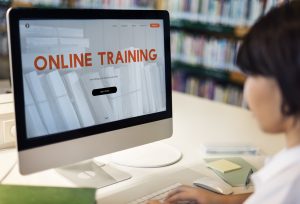Breaking into the world of IT might feel like stepping into a maze—so many paths, certifications, and tools to learn, it’s easy to feel overwhelmed. But here’s the good news: you don’t need a tech degree or prior experience to launch a successful IT career.
What you do need is a clear roadmap. And that’s exactly what this blog offers—a step-by-step guide for beginners aiming to go from novice to certified IT professionals. Whether you dream of becoming a network engineer, cybersecurity analyst, cloud architect, or help desk technician, this guide can help you take your first confident steps.
Why Certifications Matter
Before diving into the roadmap, it’s worth understanding why IT certifications are so important—especially for newcomers.
Certifications validate your skills and show employers you’re job-ready. They bridge the gap between academic learning and hands-on expertise. In a field where practical knowledge often matters more than formal education, certifications provide a trusted benchmark.
Many employers use certifications as a filter during hiring. Even entry-level certifications like CompTIA A+ or Cisco’s CCNA can significantly boost your resume, helping you stand out in a competitive job market.
Step 1: Understand Your Goals and Interests
Before choosing a certification, get clear about your interests and long-term goals. Ask yourself:
- Do I enjoy solving problems and helping people? (Consider IT support)
- Am I interested in network systems and infrastructure? (Look into networking)
- Does cybersecurity excite me? (Start with security-focused certs)
- Am I curious about how the cloud works? (Explore AWS, Azure, or Google Cloud)
- Do I enjoy coding or building applications? (Look into software development paths)
You don’t have to decide your entire career today—but having a direction helps choose the right starting point.
Step 2: Learn the Basics of IT
No matter what path you choose, every IT role requires a strong foundation. Start by getting familiar with key concepts such as:
- Computer hardware and operating systems
- Software installation and troubleshooting
- Networking fundamentals
- Basic security practices
- Common IT terminology
Online platforms like CompTIA IT Fundamentals (ITF+), Google IT Support Certificate, and even free YouTube channels can give you a beginner-friendly introduction.
Recommended beginner certification:
✅ CompTIA ITF+ – Ideal for absolute beginners to validate their interest and readiness for a tech career.
Step 3: Choose Your First Certification
Once you’ve got the basics down, it’s time to go for your first real certification. Here are a few great entry points based on popular career paths:
🔧 IT Support & Help Desk
- CompTIA A+: Widely recognised and often a requirement for support roles.
- Covers hardware, software, troubleshooting, networking, and customer support.
🌐 Networking
- CompTIA Network+: Introduces networking concepts like routing, switches, and wireless technologies.
- Cisco Certified Network Associate (CCNA): Industry-standard for aspiring network administrators.
🔐 Cybersecurity
- CompTIA Security+: Perfect for beginners interested in security fundamentals like encryption, threats, and risk management.
☁️ Cloud Computing
- AWS Certified Cloud Practitioner: A great introduction to cloud services.
- Microsoft Certified: Azure Fundamentals or Google Associate Cloud Engineer are also beginner-friendly.
Choose a certification aligned with your interests, and don’t worry if you change direction later—skills in IT often overlap and are transferable.

Step 4: Study Smart
Studying for IT certifications doesn’t have to be dry or overwhelming. Here’s how to approach it effectively:
1. Use Multiple Resources
- Video tutorials (e.g., YouTube, LinkedIn Learning)
- Official courseware (offered by platforms like CompTIA, Cisco, Microsoft)
- Interactive platforms like Ascend Education, Cybrary, or Udemy
2. Take Practice Tests
Practice exams help identify weak areas and prepare you for the real test format.
3. Join a Study Group
Online communities like Reddit (r/CompTIA), Discord servers, or LinkedIn groups offer peer support, advice, and motivation.
4. Follow a Schedule
Set a realistic timeline based on your availability—perhaps 1 hour a day for 6–8 weeks. Consistency beats cramming.
Step 5: Get Hands-On Experience
Certifications prove your knowledge—but experience proves your ability. Even if you’re new, there are several ways to get hands-on:
🔹 Virtual Labs
Many platforms (like Ascend Education) offer labs that simulate real-world scenarios—from setting up networks to troubleshooting systems.
🔹 Home Lab
Use old hardware or virtual machines to experiment with installing operating systems, configuring routers, or running cloud environments.
🔹 Volunteer Work
Offer tech support to non-profits, schools, or small businesses. It’s a win-win—you gain experience, and they get help.
🔹 Internships
Even short-term internships (paid or unpaid) provide invaluable exposure to workplace tech.
Step 6: Schedule and Pass the Exam
Once you feel prepared, book your exam through the certification’s official site (e.g., CompTIA, Cisco, AWS). Many certifications now offer remote testing, so you can take the exam from home.
Tips for exam day:
- Do a final review of key concepts the night before
- Get plenty of rest
- Ensure your testing environment is quiet and meets exam guidelines
- Stay calm—many questions are scenario-based, so apply your knowledge
Once you pass—congratulations! You’re now a certified IT professional and ready to move ahead.
Step 7: Build Your Resume and Start Applying
After earning your certification, it’s time to market yourself.
✅ Update Your Resume
Include your certification in a prominent spot, such as under your name or in a “Certifications” section.
✅ Optimise Your LinkedIn
Add your certification, update your summary, and engage in IT-related groups or discussions.
✅ Apply for Entry-Level Roles
Look for jobs like:
- IT Support Specialist
- Help Desk Technician
- Junior Network Administrator
- Cloud Support Associate
- Security Operations Centre (SOC) Analyst (entry level)
Even if the job asks for experience, your certification and hands-on labs can demonstrate your capability.
Step 8: Keep Learning and Level Up
In IT, learning never stops. Once you land your first role, you’ll gain practical experience—and you can start planning your next move.
Some possible next steps include:
- CompTIA Linux+ or Server+ for system administration
- CCNP or CompTIA Advanced Security Practitioner (CASP) for deeper networking or security
- AWS Certified Solutions Architect – Associate for advanced cloud roles
- Certified Ethical Hacker (CEH) or CISSP for cybersecurity
- Project Management Professional (PMP) if you’re interested in leadership or coordination roles
With each step, your confidence, salary potential, and career options will grow.






